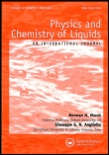
PHYSICS AND CHEMISTRY OF LIQUIDS
Scope & Guideline
Innovating Insights into Liquid-State Phenomena
Introduction
Aims and Scopes
- Thermodynamic Properties of Liquid Mixtures:
The journal emphasizes the study of thermodynamic properties such as solubility, excess properties, and phase behavior of binary and ternary liquid mixtures across varying temperatures. - Molecular Interactions:
A core focus is the exploration of molecular interactions within liquid systems, utilizing techniques like FT-IR spectroscopy, dielectric relaxation, and computational simulations to elucidate these interactions. - Experimental and Computational Techniques:
The journal publishes studies that apply both experimental methodologies and computational modeling, including Monte Carlo simulations and density functional theory, to gain insights into liquid behavior. - Solvation Models and Parameterization:
It includes research that develops and validates solvation parameter models, such as the Abraham solvation parameter model, to predict solute behavior in various solvent systems. - Applications in Pharmaceutical and Chemical Engineering:
The journal also covers the application of liquid properties in pharmaceutical formulations and chemical processes, providing valuable insights for practical applications.
Trending and Emerging
- Ionic Liquids and Deep Eutectic Solvents:
There is a significant increase in research focused on ionic liquids and deep eutectic solvents, highlighting their unique properties and applications in solubility and reaction processes. - Advanced Spectroscopic Techniques:
The use of advanced spectroscopic techniques, particularly FT-IR and dielectric relaxation methods, has gained traction for studying molecular interactions and dynamics in liquid mixtures. - Computational Modeling and Simulations:
An emerging trend involves the application of computational modeling, including Monte Carlo and molecular dynamics simulations, to predict properties and behaviors of liquid systems, enhancing theoretical understanding. - Biocompatible and Green Solvents:
Research is increasingly directed towards biocompatible solvents and environmentally friendly alternatives, driven by a global push for sustainability in chemical processes. - Pharmaceutical Applications and Drug Solubility:
There is a growing emphasis on the solubility of pharmaceutical compounds in various solvent mixtures, with a focus on improving drug delivery and formulation strategies.
Declining or Waning
- Studies on Traditional Solvents:
There has been a noticeable decrease in research focusing solely on traditional solvent systems, as newer solvents, including ionic liquids and deep eutectic solvents, gain popularity. - Limited Focus on Non-Aqueous Systems:
Research specifically targeting non-aqueous liquid systems has diminished, likely due to a broader interest in complex solvent mixtures and hybrid systems. - Decreasing Interest in Basic Physical Chemistry:
There is a trend towards more applied research in chemical engineering and pharmaceuticals, which has led to a decline in basic studies of physical chemistry that do not directly relate to practical applications.
Similar Journals
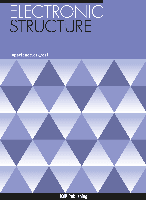
Electronic Structure
Pioneering Discoveries in Material PropertiesElectronic Structure is a pivotal journal in the field of condensed matter physics, published by IOP Publishing Ltd, a prominent name in the dissemination of scientific literature. Since its inception in 2019, the journal has rapidly gained recognition, currently holding a commendable Q1 ranking in Condensed Matter Physics, alongside respectable Q2 rankings in Electrical and Electronic Engineering, Electrochemistry, Electronic, Optical and Magnetic Materials, and Materials Chemistry as of 2023. With a strong emphasis on original research, reviews, and innovative methodologies, Electronic Structure serves as a vital platform for researchers, professionals, and students alike, enabling access to high-impact findings in diverse areas of study relevant to electronic structure and properties of materials. The journal ensures wide dissemination of knowledge in the engineering and physical sciences communities, making it an essential resource for anyone looking to stay at the forefront of advancements in these dynamic fields.
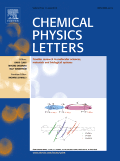
CHEMICAL PHYSICS LETTERS
Innovating Knowledge in Chemical Physics Since 1967CHEMICAL PHYSICS LETTERS, published by Elsevier, is a prestigious journal that has been at the forefront of advancing knowledge in the fields of physical and theoretical chemistry and physics since its inception in 1967. With an impressive impact factor reflective of its high-quality research output, this journal holds Q2 quartile rankings in both the Physical and Theoretical Chemistry and Physics and Astronomy categories for 2023. It is recognized as a key platform for disseminating groundbreaking findings, with Scopus rankings placing it within the top 76th and 66th percentiles in its respective categories. Researchers and professionals benefit from its insightful contributions and rigorous peer-review process, making it an essential resource for those engaged in cutting-edge chemical physics studies. Although the journal is not open access, it remains accessible through various institutional subscriptions, ensuring that a wide audience can explore its wealth of knowledge. Located in Amsterdam, Netherlands, the journal continues to drive innovation and collaboration across diverse scientific disciplines.

SEMICONDUCTORS
Shaping the landscape of advanced material science.SEMICONDUCTORS, published by PLEIADES PUBLISHING INC, is a prominent journal that provides a platform for researchers and professionals in the fields of Atomic and Molecular Physics, Condensed Matter Physics, and Electronic, Optical and Magnetic Materials. With an ISSN of 1063-7826 and an E-ISSN of 1090-6479, the journal has been diligently disseminating knowledge since its inception in 1996 and continues to pave the way for innovative research until 2024. Although currently unclassified in the Open Access model, its influence is underscored by its rankings in Scopus, where it ranks in the 21st-22nd percentile across critical scientific categories. SEMICONDUCTORS serves as an essential resource for cutting-edge research, fostering a greater understanding of semiconductor materials and their applications, thereby assisting the scientific community in pushing the boundaries of technology and innovation.

Lithuanian Journal of Physics
Bridging Gaps in Physical Science UnderstandingWelcome to the Lithuanian Journal of Physics, an esteemed publication helmed by the Lithuanian Physical Society, dedicated to advancing the field of physics and astronomy. Established in 2008 and continually publishing insightful research through 2024, this journal aims to provide a platform for high-quality scholarly articles that contribute to the understanding of various physical phenomena. With a steady presence in the academic landscape, the journal is currently ranked in the fourth quartile of the Physics and Astronomy category and is positioned at the 18th percentile in its Scopus ranking, reflecting its niche focus and accessibility for researchers and students alike. Although currently not operating under an open access model, the journal remains a vital resource for professionals seeking to stay informed on the latest developments in the field. The Lithuanian Journal of Physics invites contributions that inspire collaboration and innovation in physical sciences, making it an invaluable resource for the global scientific community seeking to expand knowledge within this dynamic field.
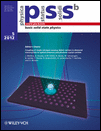
PHYSICA STATUS SOLIDI B-BASIC SOLID STATE PHYSICS
Fostering Insights into the Heart of Material SciencePHYSICA STATUS SOLIDI B-BASIC SOLID STATE PHYSICS, published by Wiley-VCH Verlag GmbH in Germany, is an esteemed journal within the condensed matter physics sphere, covering pivotal advancements in basic solid state physics. With a rich history dating back to 1961, it serves as a scholarly platform for researchers, professionals, and students alike, providing insights into the fundamental properties and applications of electronic, optical, and magnetic materials. The journal currently holds a respectable Q3 ranking in both Condensed Matter Physics and Electronic, Optical, and Magnetic Materials as of 2023, indicating its impactful contributions to these fields despite its competitive landscape. While it does not offer open access, its comprehensive research findings are critical for those engaged in innovative material science research. With a convergence period extending to 2024, PHYSICA STATUS SOLIDI B continues to play a significant role in facilitating knowledge exchange and fostering advancements in solid state physics.
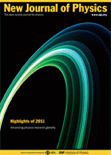
NEW JOURNAL OF PHYSICS
Bridging theory and practice in contemporary physics.NEW JOURNAL OF PHYSICS, published by IOP Publishing Ltd, is a prestigious open-access journal that has been at the forefront of the physics community since its inception in 1998. With an impact factor that places it in the Q1 category of Physics and Astronomy (miscellaneous) and a commendable ranking of #49 out of 243 in the general physics and astronomy category according to Scopus, this journal is recognized for its significant contribution to advancing research in the field. The journal caters to a broad scope of topics, providing a platform for the dissemination of cutting-edge research findings and innovative theoretical explorations. Operating from the United Kingdom, it offers a truly international perspective, making its contents accessible and impactful to a global audience. With robust open-access options, the NEW JOURNAL OF PHYSICS ensures that research findings are freely available, promoting collaboration and knowledge sharing among researchers, professionals, and students alike. This commitment to accessibility, combined with its high-quality content, makes it an essential resource for anyone engaged in the physics community.
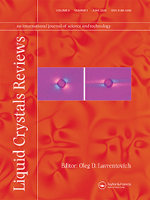
Liquid Crystals Reviews
Unraveling the Mysteries of Liquid CrystalsLiquid Crystals Reviews, published by Taylor & Francis Ltd, is an esteemed journal dedicated to the nuanced field of liquid crystal technology and its applications. With an ISSN of 2168-0396 and an E-ISSN of 2168-0418, this journal has established itself as a vital resource for researchers, professionals, and students alike, providing a platform for rigorous peer-reviewed articles and innovative research findings. Impressively, it holds a Q1 ranking in Chemistry, Condensed Matter Physics, and Materials Science as of 2023, underscoring its significance in these disciplines. The journal spans a convergence period from 2013 to 2024, inviting high-quality contributions that lead to foundational advancements in understanding the properties and uses of liquid crystals. While the journal is not open access, its impact on the scientific community is profound, serving as a cornerstone for knowledge dissemination and advancement in liquid crystal research. Located in the United States with its publishing office in England, Liquid Crystals Reviews operates at the crossroads of innovation and academic excellence.
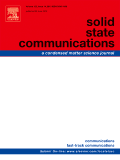
SOLID STATE COMMUNICATIONS
Fostering Collaboration in Solid-State ResearchSOLID STATE COMMUNICATIONS is a prestigious journal published by Pergamon-Elsevier Science Ltd, dedicated to disseminating cutting-edge research in the fields of Chemistry, Condensed Matter Physics, and Materials Chemistry. With an ISSN of 0038-1098 and an E-ISSN of 1879-2766, the journal has established itself as a vital resource for researchers and professionals seeking to explore the fundamental properties and innovative applications of solid-state materials. As of 2023, it boasts a commendable standing, ranking in the Q2 quartile across its various categories, reflecting its impactful contributions to the scientific community. The journal is indexed in Scopus, further validating its relevance and quality, with notable ranks close to the median percentile in key areas. While SOLID STATE COMMUNICATIONS does not currently offer Open Access options, it remains a highly regarded source for rigorous scientific inquiry and open discussions, with a publication history dating back to 1963 and continuing to 2024. The journal serves as an essential platform for disseminating groundbreaking findings and fostering collaboration within the vibrant fields of solid state science.
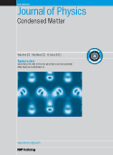
JOURNAL OF PHYSICS-CONDENSED MATTER
Exploring the Intersection of Theory and Application in Materials Science.JOURNAL OF PHYSICS-CONDENSED MATTER, published by IOP Publishing Ltd, stands as a premier platform for the dissemination of impactful research in the fields of condensed matter physics and materials science. Since its inception in 1989, this journal has successfully bridged the gap between fundamental and applied research, delivering cutting-edge findings pertinent to both the academic community and industry professionals. Ranking in the Q2 category for both Condensed Matter Physics and Materials Science, it holds a respectable position within the scientific community, as evidenced by its Scopus rankings. With a commitment to fostering innovative research and promoting open dialogue, the journal offers a substantial collection of articles that contribute to the evolving landscape of materials science and physics. Researchers and students are encouraged to engage with the journal’s rich content, which not only enhances their academic pursuits but also plays a crucial role in advancing technologies based on solid-state materials.
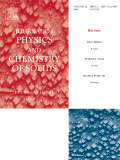
JOURNAL OF PHYSICS AND CHEMISTRY OF SOLIDS
Transforming Knowledge in Physics and ChemistryJOURNAL OF PHYSICS AND CHEMISTRY OF SOLIDS, published by Pergamon-Elsevier Science Ltd, is a distinguished international journal that has been at the forefront of disseminating cutting-edge research in the fields of physics, chemistry, and materials science since its inception in 1956. This journal, which is recognized for its high impact in the Q2 category across multiple subjects—including Chemistry (miscellaneous), Condensed Matter Physics, and Materials Science—serves as a vital platform for researchers, professionals, and students to engage with significant advances in solid-state physics and chemistry. With Scopus rankings placing it in the top 15% of its field across various domains, the journal plays a crucial role in shaping the scientific dialogue surrounding materials properties, synthesis, and applications. Although it does not currently offer open access options, the presented research is widely recognized for its quality and relevance, ensuring that published works contribute meaningfully to ongoing scholarly discussions.